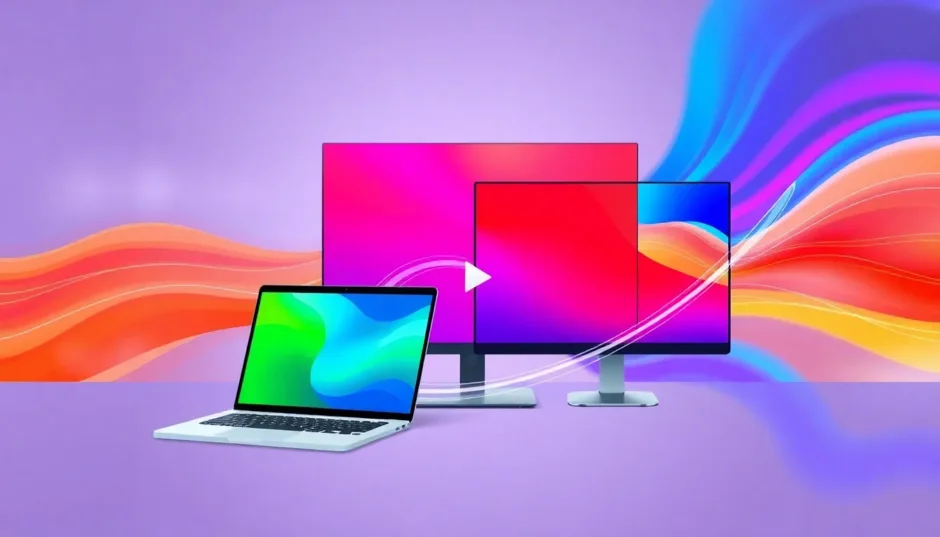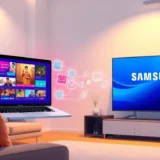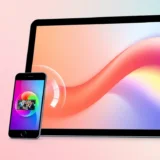Have you ever been in the middle of an important presentation or about to beat your high score in a mobile game when suddenly your screen mirroring starts acting up? That frustrating delay between what’s happening on your phone and what appears on your big screen can ruin the entire experience. If you’ve found yourself wondering “why is my screen mirroring lagging?” you’re definitely not alone.
Screen mirroring technology has become incredibly popular for everything from business meetings to gaming sessions, but that annoying lag can make you want to throw your remote across the room. The good news is that understanding what causes screen mirroring lagging issues and knowing how to fix them can transform your mirroring experience from frustrating to flawless.
Table of Contents
- What Exactly is Screen Mirroring Lag?
- Common Reasons Behind Screen Mirroring Lagging Issues
- How to Make Screen Mirroring Less Laggy: Practical Solutions
- Software Solutions for Lag-Free Mirroring
- Why Screen Mirroring Lagging Occurs on TVs and How to Address It
- Advanced Techniques to Make Screen Mirroring Less Laggy
- Special Considerations for Gaming and High-Motion Content
- Troubleshooting Persistent Screen Mirroring Lagging
- Real-World Impact of Solving Screen Mirroring Lagging
- Future Developments in Screen Mirroring Technology
- Putting It All Together: Your Action Plan Against Screen Mirroring Lag
What Exactly is Screen Mirroring Lag?
Let’s break down what we mean when we talk about screen mirroring lag. Essentially, it’s that noticeable delay between an action on your source device (like your smartphone or tablet) and when you see it happen on your target display (your TV, monitor, or projector). This delay can show up as stuttering video, audio that’s out of sync, slow response to your taps and swipes, or even complete freezing.
When people ask “why is my screen mirroring lagging,” they’re usually experiencing one or more of these symptoms. The delay might be just a fraction of a second, but when you’re playing games or giving a presentation, even that small lag can be incredibly disruptive.
Common Reasons Behind Screen Mirroring Lagging Issues
So what actually causes these annoying delays? There are several factors that can contribute to screen mirroring lagging problems, and often it’s a combination of these issues rather than just one single cause.
Network issues are probably the biggest culprit when it comes to screen mirroring lagging. If your Wi-Fi signal is weak or your network is crowded with too many devices, your mirroring session will suffer. Distance from your router, physical obstructions like walls, and interference from other electronic devices can all degrade your wireless signal quality.
Hardware limitations can also play a significant role. Older routers might not support the latest Wi-Fi standards that enable faster data transfer. Similarly, older smartphones or TVs might struggle with the processing power needed for smooth screen mirroring. If you’re trying to mirror high-resolution content, the demands on your devices are even greater.
Software-related factors shouldn’t be overlooked either. The screen mirroring app or built-in feature you’re using might not be optimized for performance. Background applications running on your devices can consume precious processing power and network bandwidth that would otherwise be dedicated to your mirroring session.
Even the type of content you’re mirroring can affect performance. Streaming high-resolution videos or playing graphics-intensive games requires more data transfer than simply mirroring your home screen or a document.
How to Make Screen Mirroring Less Laggy: Practical Solutions
Now that we understand what causes screen mirroring lagging, let’s explore some practical ways to make screen mirroring less laggy. These solutions range from simple tweaks to more significant changes in your setup.
Starting with your network, one of the most effective ways to reduce screen mirroring lagging is to improve your Wi-Fi connection. If possible, connect both your source device and your display to the 5GHz band of your router instead of the more crowded 2.4GHz band. Positioning your devices closer to the router and reducing physical obstructions can also make a big difference.
For the ultimate stability, consider using wired connections where possible. Ethernet connections provide much more consistent performance than wireless ones. If you’re mirroring to a smart TV or streaming device that supports Ethernet, this single change could significantly reduce your screen mirroring lagging issues.
On the device side, make sure both your source device and target display are running the latest software updates. Manufacturers often release performance improvements and bug fixes that can help with screen mirroring. Closing unnecessary background applications can free up system resources, and reducing the mirroring resolution in your settings can lighten the data load if you’re experiencing persistent lag.
If you’re using screen mirroring on TV, consider whether your TV’s built-in smart features might be part of the problem. Some TV processors struggle with real-time mirroring, and using an external streaming device might provide better performance.
Software Solutions for Lag-Free Mirroring
When basic fixes aren’t enough, specialized screen mirroring software might be your answer. These applications are specifically designed to optimize performance and reduce lag, offering features that go beyond basic built-in mirroring functions.
iMyFone MirrorTo.Mirror and control your iPhone/iPad/Android on your PC to type, click, swipe, and scroll.Get 1080P screen recording and screenshots.Stream content from phone to YouTube, Twitch, Discord, Zoom, etc.Customizable keyboard mappings for moving, jumping, and shooting.Transfer files conveniently between Android and PC.

Check More Details | Download Now! | Check All Deals
Dedicated mirroring applications often provide more control over quality settings, allow both wired and wireless connections, and include performance optimization features that standard mirroring options lack. They’re particularly useful for situations where reliability is crucial, such as business presentations or live streaming.
When comparing different software options, look for features like adjustable resolution settings, performance monitoring, and support for both USB and Wi-Fi connections. Reading user reviews specifically mentioning performance and lag can give you a good sense of how well different applications handle screen mirroring lagging issues.
Why Screen Mirroring Lagging Occurs on TVs and How to Address It
Screen mirroring lagging on TV is a particularly common complaint, and there are some TV-specific factors that can contribute to this problem. Many modern smart TVs have built-in screen mirroring capabilities using technologies like Miracast, AirPlay, or manufacturer-specific solutions, but these don’t always perform optimally.
TV processors are often not as powerful as those in computers or mobile devices, which can lead to decoding delays when receiving mirrored content. Additionally, TVs are typically further from Wi-Fi routers than mobile devices, resulting in weaker wireless signals.
To combat screen mirroring lagging on TV, try connecting your TV to your network via Ethernet if possible. If you’re using wireless, make sure your TV is connected to the 5GHz band if available. Some users find that using an external streaming device (like a Roku, Apple TV, or Chromecast) provides better mirroring performance than their TV’s built-in capabilities.
Another approach is to use a mirroring application that connects through your home network rather than relying on direct device-to-TV connections. These can sometimes provide more stable performance, though they may introduce other limitations.
Advanced Techniques to Make Screen Mirroring Less Laggy
If you’ve tried the basic solutions and are still dealing with screen mirroring lagging, there are some more advanced techniques you can explore to make screen mirroring less laggy.
Network optimization goes beyond just choosing the right Wi-Fi band. Accessing your router’s admin settings to prioritize traffic for your mirroring devices can significantly improve performance. Many modern routers offer Quality of Service (QoS) settings that allow you to designate certain devices or types of traffic as high priority.
For gaming or other latency-sensitive applications, consider creating a dedicated Wi-Fi network just for your mirroring setup. This eliminates competition from other household devices and can provide a clean, uninterrupted connection.
On the device side, some mirroring applications offer advanced settings for adjusting encoding parameters, frame rates, and bitrates. While these settings can be technical, experimenting with them (particularly lowering frame rates or bitrates) can sometimes resolve persistent screen mirroring lagging issues when other solutions haven’t worked.
Hardware upgrades might be worth considering if you’re consistently struggling with performance. A modern Wi-Fi 6 router can provide significantly better performance for multiple devices, and newer smartphones generally handle mirroring more efficiently than older models.
Special Considerations for Gaming and High-Motion Content
When it comes to gaming or watching fast-action videos, screen mirroring lagging becomes especially noticeable and problematic. The requirements for these use cases are more demanding than for basic screen sharing, so they need special attention.
For gaming, every millisecond of delay counts. This is where questions about how to make screen mirroring less laggy become most urgent. Wired connections are strongly recommended for gaming mirroring—both for your network connections and, if possible, for the connection between your mobile device and display.
Many dedicated mirroring applications offer game-specific modes that optimize settings for lower latency. These modes typically prioritize responsiveness over visual quality, which is exactly what you want when gaming.
If you’re mirroring high-frame-rate content, make sure your mirroring solution supports the frame rate you’re trying to achieve. Some systems automatically cap frame rates, which can make fast motion appear jerky or laggy even when the actual latency is low.
iMyFone MirrorTo.Mirror and control your iPhone/iPad/Android on your PC to type, click, swipe, and scroll.Get 1080P screen recording and screenshots.Stream content from phone to YouTube, Twitch, Discord, Zoom, etc.Customizable keyboard mappings for moving, jumping, and shooting.Transfer files conveniently between Android and PC.

Check More Details | Download Now! | Check All Deals
Troubleshooting Persistent Screen Mirroring Lagging
When you’ve tried everything and are still asking “why is my screen mirroring lagging,” it’s time for some systematic troubleshooting. Start by isolating variables to identify the specific source of your screen mirroring lagging issues.
Test with different source devices if possible. If the lag disappears with a different phone or tablet, you’ve identified the likely culprit. Similarly, try mirroring to different displays to see if the issue follows a particular device.
Network isolation tests can also be revealing. Try creating a mobile hotspot with your phone and connecting your display directly to it (if supported). If the lag disappears, the issue is likely with your home network rather than your devices.
Don’t forget to check for interference from other wireless devices. Cordless phones, microwave ovens, and even some LED lights can disrupt Wi-Fi signals. Try turning off other wireless devices temporarily to see if your screen mirroring lagging improves.
If you’re using mirroring software, check for updates or try alternative applications. Sometimes a simple software update can resolve performance issues, and different applications may use different technologies that work better with your specific setup.
Real-World Impact of Solving Screen Mirroring Lagging
Fixing screen mirroring lagging issues isn’t just about technical satisfaction—it has real practical benefits across various aspects of modern digital life.
In educational settings, teachers can seamlessly share content from their devices to classroom displays without awkward pauses or synchronization issues. Students remain engaged when lessons flow smoothly, and technical difficulties don’t interrupt the learning process.
For business professionals, reliable screen mirroring means presentations proceed without embarrassing delays or freezes. Whether you’re sharing sales data, demonstrating software, or collaborating with remote team members, smooth mirroring helps maintain professionalism and audience engagement.
Gamers and entertainment enthusiasts benefit tremendously from lag-free mirroring. The difference between winning and losing a competitive game can come down to milliseconds of delay, and movie nights are much more enjoyable when audio and video stay perfectly synchronized.
Even in casual home use, eliminating screen mirroring lagging makes the technology actually enjoyable to use rather than something you struggle with. Sharing photos with family, following recipes in the kitchen, or controlling your smart home devices from a larger display all become pleasant experiences rather than sources of frustration.
Future Developments in Screen Mirroring Technology
The good news for anyone tired of dealing with screen mirroring lagging is that the technology continues to evolve. New standards and improvements are regularly being developed that should further reduce latency issues.
Wi-Fi 6 and the upcoming Wi-Fi 7 standards offer significant improvements in efficiency, capacity, and latency reduction. As these technologies become more widespread, they should help alleviate many of the network-related causes of screen mirroring lagging.
Improvements in video compression technology, such as more efficient codecs, allow higher quality video to be transmitted using less bandwidth. This reduces the network demands of screen mirroring and can help prevent lag even on crowded networks.
Hardware manufacturers are also increasingly optimizing devices specifically for screen mirroring use cases. Some smartphones now include dedicated processing for low-latency mirroring, and TVs are being designed with better networking capabilities and more powerful processors.
As 5G networks expand, we may also see new mirroring solutions that leverage cellular technology either as a primary connection or as a backup when Wi-Fi performance is poor. This could provide more consistent performance regardless of local network conditions.
Putting It All Together: Your Action Plan Against Screen Mirroring Lag
Dealing with screen mirroring lagging can be frustrating, but as we’ve seen, there are numerous strategies you can employ to improve your experience. Start with the simple solutions—optimize your Wi-Fi setup, close background applications, and ensure your devices are updated.
If basic fixes don’t resolve your screen mirroring lagging issues, consider more advanced approaches like wired connections, network prioritization settings, or dedicated mirroring software. Remember that different use cases have different requirements—what works for casual video watching might not be sufficient for competitive gaming.
iMyFone MirrorTo.Mirror and control your iPhone/iPad/Android on your PC to type, click, swipe, and scroll.Get 1080P screen recording and screenshots.Stream content from phone to YouTube, Twitch, Discord, Zoom, etc.Customizable keyboard mappings for moving, jumping, and shooting.Transfer files conveniently between Android and PC.

Check More Details | Download Now! | Check All Deals
The most important thing is to be systematic in your approach. Change one variable at a time so you can identify what actually makes a difference for your specific setup. What solves screen mirroring lagging for one person might not work for another, depending on their unique combination of devices, network environment, and use cases.
With the right approach and a bit of patience, you can significantly reduce or even eliminate screen mirroring lagging from your digital life. The result is a seamless, enjoyable mirroring experience that actually enhances how you use your devices rather than frustrating you. Whether you’re working, learning, playing, or simply consuming content, smooth screen mirroring can transform how you interact with your digital world.
Some images sourced from iMyFone
 TOOL HUNTER
TOOL HUNTER


